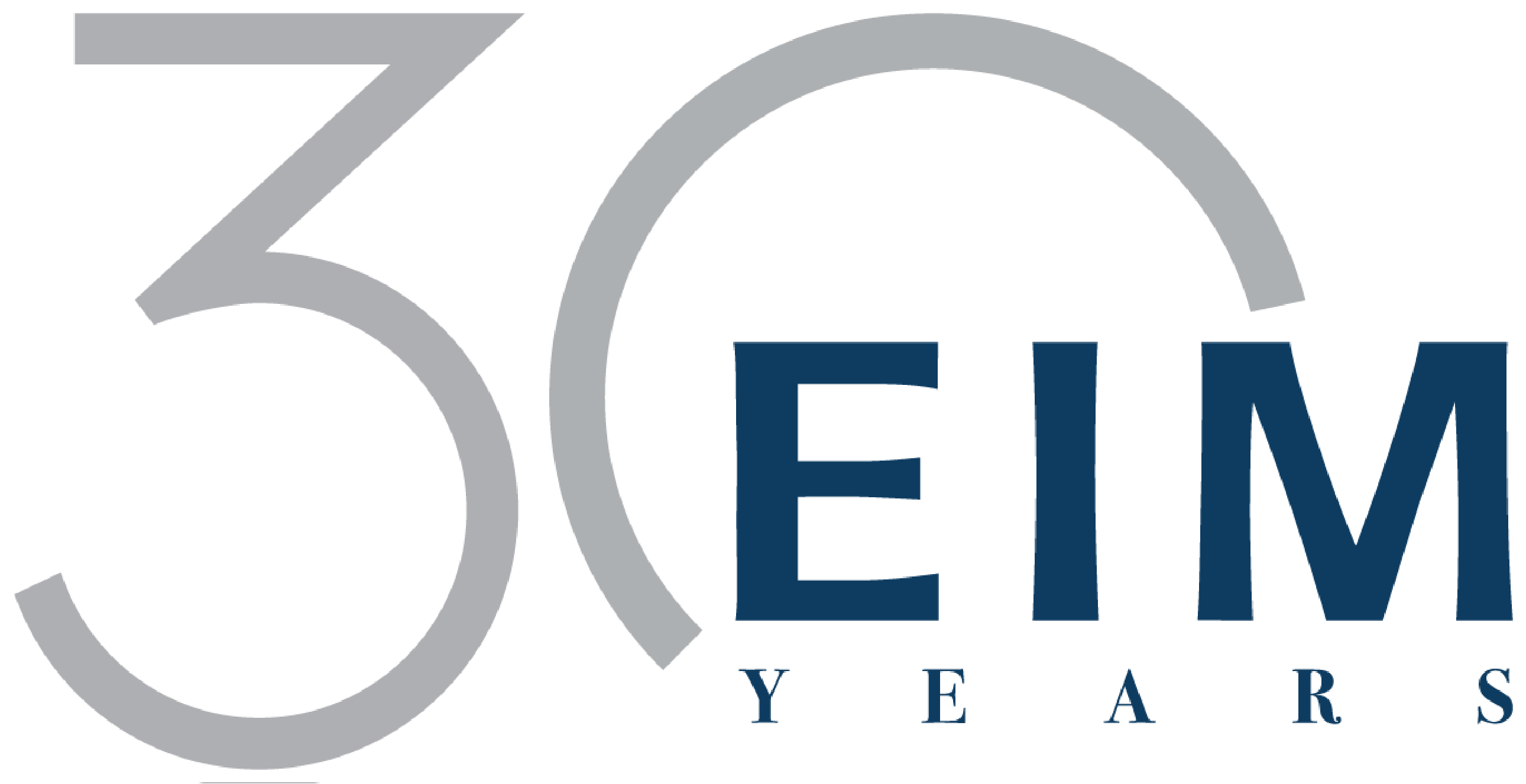
Agility Update December 2019
AN INDEPENDENT GLOBAL PARTNERSHIP BACKED BY THE EXPERIENCE OF OVER 10,000 ASSIGNMENTS WORLDWIDE.
Close to one and a half years ago I acquired EIM, the leading Interim Management firm, in Australia and New Zealand. After a fantastic transition with the previous owners (Chris and Garry), I am very pleased to welcome Ryan Lewis to the EIM team building on the rock-solid foundations and values built over the last 20 years by Garry Ringwood, Chris Callinan, Alan Locke, and Robert Ward.
Ryan, who joins the EIM family, was a lawyer before starting his career in executive search and leading a listed firm across numerous countries over the past 15 years. He has a strong track record supporting Boards and CEO’s across private equity, multinational, sovereign wealth funds and ASX Listed businesses. Ryan’s core functional expertise is partnering closely with his clients on CFO, CEO, CIO’s and key strategy/change appointments. Recently, he supported the ADAPT Executive Search business, which I founded in 2015.
Before we wish you all the best for Christmas and the New Year, Agility Update December offers a very topical article on preparing for the sudden exits of CEOs; another on areas where early stage biotechs are skewing to; and how technology and the beauty industry are intersecting.
Keep well, keep safe and we will see you again in February 2020.
Preparing for Sudden CEO Turnover
ASX 200 CEO turnover hit a three year high of 22% according to the recently released 2019 CEO Tracker. As contingency plans are often not prioritised or simply not there, sudden CEO and top executive departures can leave companies scrambling for a replacement with the skills, knowledge and experience to lead in troubled times.
Moreover, this lack of preparedness comes at a steep cost. MIT Sloan Review referred to a study published in the International Journal of Financial Research which estimated that it costs organisations an average of US$136M to suddenly lose a CEO through illness or death rather than having a planned retirement with an organised succession plan. Presumably, when a CEO leaves abruptly under a cloud, the cost to an organisation’s reputation and market may be even higher.
MIT Sloan Review also referred to research by IMD in Lausanne, Switzerland, that found more than half (58%) of boards do not have emergency succession plans in place. About half (52%) say they would hire an outsider if they had to bring in a new CEO, with only about one-third (35%) of board members saying an internal candidate would most likely be chosen. In Australia, nearly half (48%) of the new CEOs have been selected from outside their company, including all new female appointments.
To mitigate their risk, all boards are advised to have a three-point plan:
- Prepare a succession plan;
- Develop a set of procedures to follow in seeking out and hiring a new CEO;
- Meet with potential candidates year-round.
Read also Isentia’s Latest Leadership Index: Leading through Crisis and its analysis that found Facebook’s Mark Zuckerberg and Boeing’s Dennis Muilenburg got it wrong and could learn from the words and actions of Rugby Australia’s Raelene Castle and New Zealand Prime Minister Jacinda Ardern.
Biotechs to Test Drive
The recent TechKnow Invest Roadshow which attracted retail and institutional investors, as well as brokers looking for opportunities in early stage companies showed a significant skew towards biotechs. Reporting on the event FinFeed singled out companies operating in the following areas:
- Combining proven drugs and technologies with new solutions to treat cancer e.g.
- Volpara Health Technologies focusing on the early detection of breast cancer;
- drug development group Noxopharm Ltd focusing on the potential benefits to cancer patients in being able to increase their responsiveness to radiotherapies and standard of care chemotherapies, but with lowered side-effects.
- Mixing telecommunications, technical innovation and medical services e.g.
- iCetana offers real-time AI-assisted video monitoring software that identifies anomalies and risk events that may have applications in terms of monitoring patient health in a home environment;
- InteliCare uses data from “smart” sensors to build a model of normal domestic routine within a home to provide family and care givers a real-time view of the well-being of people in an independent living environment.
- Developing digital healthcare solutions to assist doctors and empower patients e.g.
- ResApp Health Ltd is creating easy to use, affordable, clinically validated and regulatory approved tools that only require a smartphone to diagnose and manage respiratory disease;
- PainChek® is using AI and facial recognition technology in the world’s first pain assessment tool that has regulatory clearance in Australia and Europe.
- Ist Group runs integrated platforms providing an easy to use online search, appointment booking service and other value-added services. Its portals include MyHealth1st.com.au, PetYeti.com.au and GoBookings.com.
Click here to read about non-biotech companies including K-TIG which is commercialising a high-speed, high-productivity welding technology that was originally developed by the CSIRO; and First Graphene Ltd which has a robust manufacturing and delivery platform producing a high quality graphene material.
3Ps drive Beauty Growth
The US$60B beauty market in China is set to overtake the US as the largest beauty market in the world by 2023, and has the potential to double by 2030 according to a new report by J.P. Morgan.
Chinese domestic demand drives about 30% of the growth focused on the 3Ps – prestige, personalisation and purity – while eCommerce helps beauty companies reach customers outside of China’s most developed cities. Chinese consumers fuelling the growth are the growing middle class, and young customers with increased spending power subsidised by their parents and grandparents, who aspire to have the best.
Personalised, customised or bespoke beauty is another strong trend in China as well as globally, and investment in digital technology is crucial to its delivery. For example, L'Oréal bought a startup company called Modiface, where augmented reality lets consumers try on makeup; Lancome’s Shade Finder uses AI to recommend a particular foundation for consumers; Optune by Shiseido is a subscription IoT personalised skincare system where a special machine dispenses optimal skincare product ‘shots’ matched with the individual user’s daily skin conditions and living environments which change day to day.
Purity of ingredients, variously termed clean beauty, natural, green, organic, vegan etc is another trend that is destined to be table stakes rather than a differentiator as it is now.
Those interested in the China beauty market should also note 6 additional trends:
- Local Chinese brands are growing.
- The male segment is seeing unprecedented growth.
- K-beauty is waning as consumers focus on authenticity and seek products that allow them to express their identity and individuality.
- Livestreaming is the new norm in the beauty industry.
- Increasing demand for sample- or travel-sized makeup and sets.
- Rising partnerships, acquisitions, and mergers between multinational brands and domestic players.
For a more granular view, read the results of an Ipsos survey of 600 Chinese female consumers in China's first- and second-tier cities. For a global overview of the trends shaping the global US$532B beauty business, check out the Ipsos “What the Future” report from surveying more than 19,000 adults from 27 countries.

EIM AUSTRALIA
EIM (Executive Interim Management) was founded to meet the need in client organisations for experienced leaders at short notice to facilitate and accelerate change. We are an independent global partnership backed by the experience of over 10,000 assignments worldwide.
Arrange a consultation >